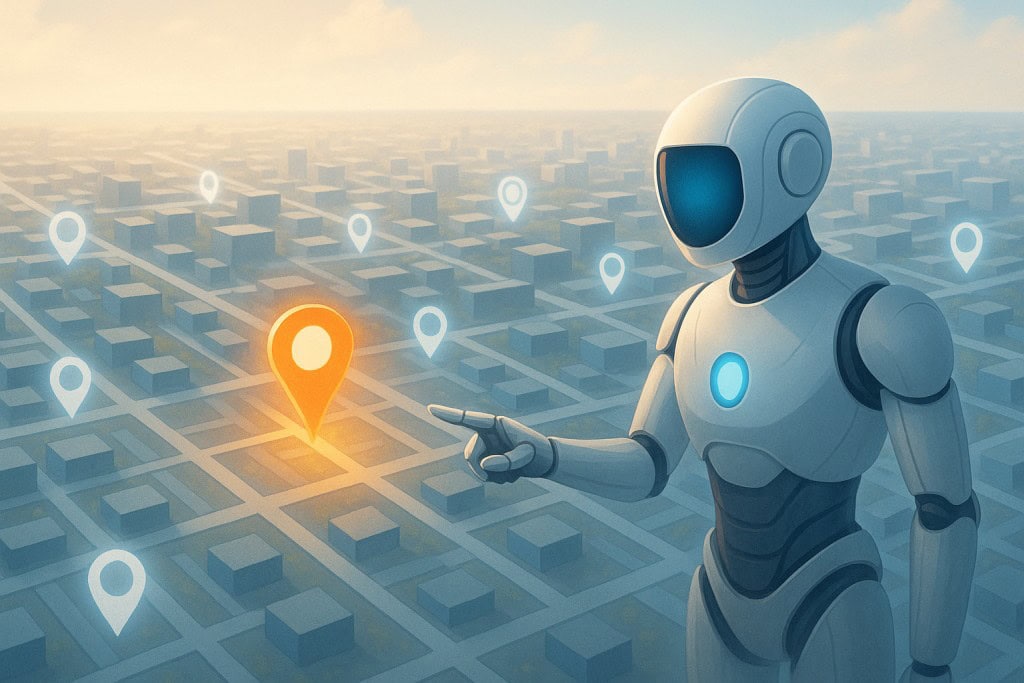
TD Summary: AI-Enhanced Customer Journey strategies help businesses guide audiences from first touch to lifelong advocacy. We explore how artificial intelligence reshapes every stage — awareness, consideration, decision, and beyond — turning customers into brand advocates.
The way customers discover, evaluate, and stay loyal to brands has changed dramatically. The modern buyer doesn’t move in a straight line from awareness to purchase — they explore, compare, and interact across countless digital touchpoints. In this environment, the AI-Enhanced Customer Journey redefines how companies attract and retain customers by using artificial intelligence to predict intent, personalize experiences, and build lasting relationships.
For B2B marketers, this isn’t just about adding automation. It’s about connecting data, human insights, and AI tools to create a seamless journey that converts awareness into advocacy. When used strategically, AI helps brands understand customers on a deeper level — anticipating needs before they’re expressed and responding with precision and empathy.
AI-Enhanced Customer Journey: Smarter Targeting and Predictive Discovery
The awareness stage is where curiosity begins — and where many brands struggle to stand out. AI gives marketers the ability to identify and reach the right audiences earlier and more efficiently than ever before.
AI-driven platforms analyze vast amounts of behavioral and intent data from search patterns, social media activity, and content engagement to pinpoint when and where potential customers are most receptive. Predictive models recommend ideal channels, messaging, and creative assets to match buyer intent.
For example, tools like HubSpot’s AI-powered campaign optimizer help brands run smarter awareness campaigns by suggesting high-performing topics and keywords. Combined with SmartFinds Marketing’s AI Marketing expertise, this approach replaces guesswork with evidence-based targeting.
Personalization in the AI-Enhanced Customer Journey
Once awareness is established, prospects move into research mode. This is where personalization becomes essential — and where AI shines brightest.
Machine learning algorithms analyze real-time behavior such as page visits, content downloads, and interaction patterns. From there, AI recommends the next best content, product, or message. The result is a dynamic, self-adapting experience that keeps customers engaged without manual intervention.
AI chatbots and conversational agents have also become key at this stage, offering personalized answers 24/7 while collecting valuable context for future interactions. For instance, if a visitor spends time reading about AI marketing automation, the system can instantly recommend related resources, nurturing the relationship with relevance and timing.
AI chatbots and conversational agents have also become key at this stage, offering personalized answers 24/7 while collecting valuable context for future interactions. For instance, if a visitor spends time reading about the customer journey, the system can instantly recommend related resources, nurturing the relationship with relevance and timing. According to insights from the AI Marketing Institute, these personalization algorithms help businesses deliver more engaging experiences that adapt to real-time behavior.
Decision Stage: AI-Driven Trust, Conversions, and Proof
At the decision point, buyers evaluate options and risks. Here, AI becomes a data-driven advisor. It identifies which messages, offers, or formats most influence conversion.
AI-powered analytics platforms monitor heatmaps, session recordings, and click paths to identify barriers in the buying process. Predictive CRO (Conversion Rate Optimization) tools can even suggest specific changes — such as call-to-action placement, headline testing, or form simplification — that drive measurable results.
SmartFinds Marketing’s Conversion Rate Optimization (CRO) programs use these same AI insights to help clients achieve faster results with no additional ad spend. By combining analytics, testing, and human interpretation, AI helps marketers understand why customers convert — not just when.
As trust becomes the deciding factor, AI also helps detect sentiment patterns in reviews, social comments, and surveys, giving brands the intelligence to respond proactively and strengthen credibility.
Retention Stage: Predictive Loyalty and Ongoing Engagement
Winning new customers is only half the battle — keeping them engaged defines true success. The AI-Enhanced Customer Journey continues after conversion by anticipating future needs and personalizing follow-up communications.
AI models can predict churn before it happens by tracking subtle behavioral shifts, such as declining engagement or slower response times. These insights trigger automated but personalized outreach — a timely email, a tailored offer, or even a reminder from the account team.
Recommendation engines, similar to those used by streaming and e-commerce platforms, help businesses offer relevant add-on products or services, enhancing both value and loyalty. According to HubSpot research on AI and customer retention, companies using AI for retention see up to a 20% improvement in customer lifetime value, proving that consistent personalization drives long-term growth.
Advocacy Stage: Turning Data into Human Connection
The final stage of the AI-Enhanced Customer Journey transforms satisfied customers into passionate advocates. AI helps identify who your biggest promoters are, what motivates them, and how to amplify their voice.
Natural Language Processing (NLP) tools analyze reviews, testimonials, and social mentions to uncover advocates organically promoting your brand. AI can then help automate outreach — inviting those individuals to share stories, participate in case studies, or join ambassador programs.
But advocacy isn’t only about automation. It’s about empowering human connection through insights. By understanding emotional drivers behind customer loyalty, brands can use AI data to create more authentic relationships — ones built on recognition, trust, and shared purpose.
This final step closes the loop, ensuring your marketing doesn’t just generate customers — it builds a community of enthusiastic supporters who help fuel future awareness.
Why Mapping the AI-Enhanced Customer Journey Matters
Mapping every stage of the AI-Enhanced Customer Journey reveals opportunities for efficiency, empathy, and innovation. It ensures your marketing and sales teams focus on experiences that truly move the needle.
When you visualize how AI influences each touchpoint — from initial exposure to long-term loyalty — you gain a blueprint for smarter engagement. The process helps uncover where automation fits, where human creativity adds value, and how the two work together to scale results.
For SmartFinds Marketing, this approach aligns perfectly with our philosophy: using technology intelligently, not blindly, to enhance the human side of marketing. Data and AI should empower creativity, not replace it.
Turning Insights Into Impact: The Future of AI-Enhanced Marketing
The AI-Enhanced Customer Journey represents the evolution of modern marketing — where personalization, data, and automation come together to deliver meaningful, memorable experiences.
From awareness to advocacy, AI doesn’t replace the marketer’s intuition; it amplifies it. The brands that thrive will be those that embrace AI as a strategic partner — mapping every interaction with precision while keeping the customer’s voice at the center of every decision.
As artificial intelligence continues to advance, marketers who adopt this framework will gain not only more conversions but deeper trust and loyalty — turning customers into advocates, and advocates into lifelong partners.
Schedule a Discovery Call Now
Author: Melih Oztalay




















